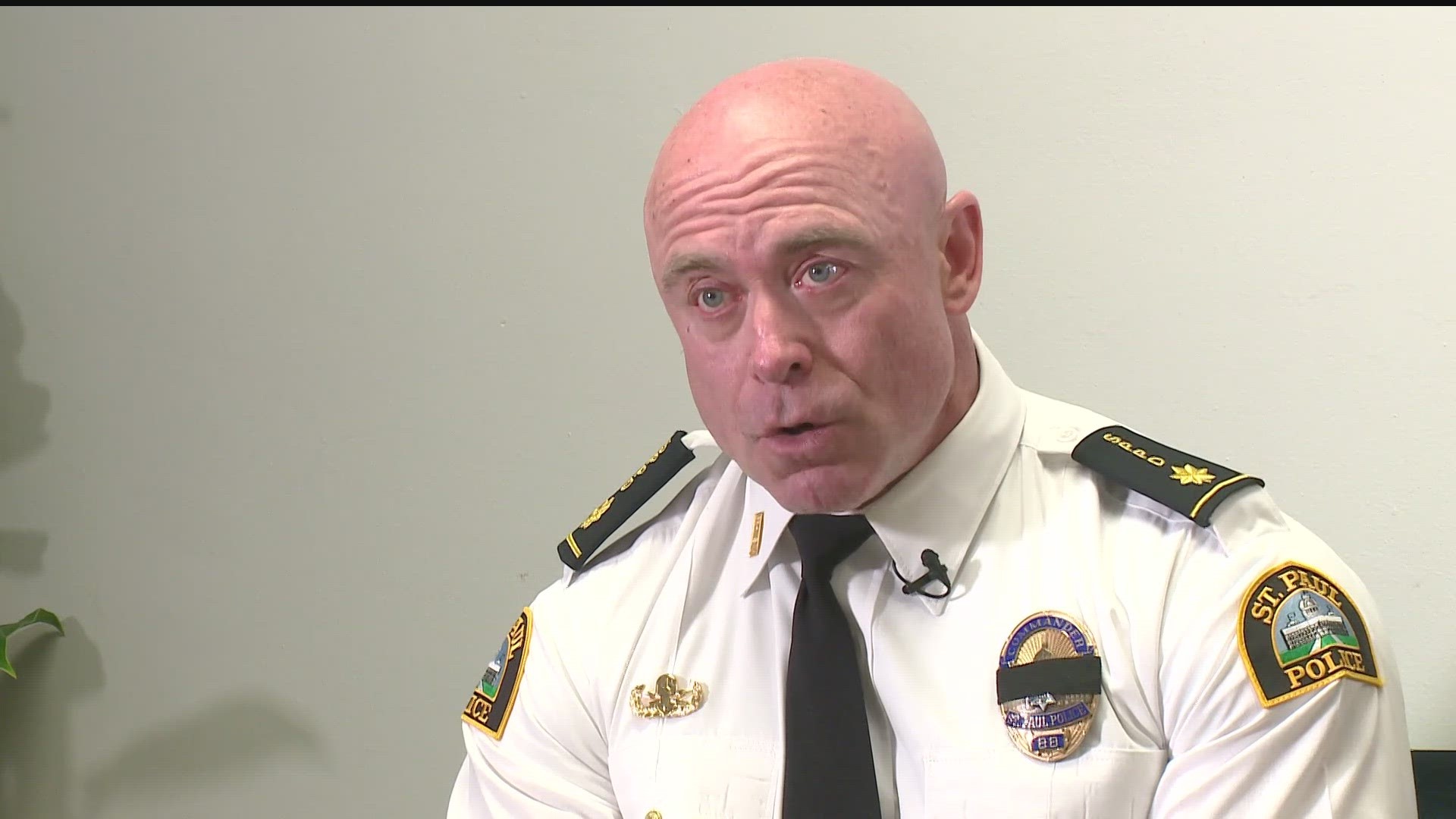ST PAUL, Minn. — Saint Paul Police say the department has seen a drop in gun-related violence since the city started a new community initiative last summer.
Part of the strategy is targeting at-risk youth through the environment they live in.
Brooke Blakey is the Office of Neighborhood Safety director and regularly works with Saint Paul Police Commander Jeff Stiff with the ASPIRE Program and Project PEACE. Their organizations started last summer when Mayor Carter commissioned new ways to address safety.
They work with all ages but say changing the system for kids will help everyone.
"We're looking at individuals that we know are at high risk," said Blakey. "And what we're doing is we're looking at not only them but their family, and the community dynamics that run into play."
Stiff will refer people of all ages to Blakey's office and will team up with other organizations to get resources to not only victims, but kids committing crimes, their friends, family, and support systems.
"Whether it's bus passes, or I need to fill your fridge up with food, or, I really need you to have a conversation with the Public Housing Agency," said Stiff.
"I think this is the first time in a very long time that every department within the city has a role and is playing a role in this," said Blakey.
But both admit that they are navigating a system that is outdated.
"I think is really important to note is that the juvenile justice system, when it was originally set up, was set up for real low-level crimes, truancy, theft," said Stiff.
Now, agencies are dealing with teens charged with serious crimes.
Documents show 17-year-old Kle Swee was charged with shooting and killing Michael Brasel, the St. Paul man who was fatally shot earlier in May in front of his home.
"That young man may have not had that link," said Blakey. "He entered into the correction system. And they did all of those things that are within their purview at that moment. But what we don't take into account is the trauma that brought him there."
"What I can say is that there was a ball drop somewhere," said Stiff.
They say this is the kind of scenario they want to fix, where an at-risk youth doesn't have to face the same risky environment.
Blakey describes her ideal process as an intensive care unit.
"We don't take somebody that's just getting ready to leave an ICU and put them back where everybody's got a cold, or infections," said Stuff. "We give them all of the resources and all of the antibiotics that they need so that they're prepared to go back into that space."
Stiff and Blakey said that in an ideal world, their organizations and partners would have more staffing.
"If I could wave, a magic wand, that would be the first thing is human capital to get individuals into do that work that one on one mentoring, that life coaching that some of these individuals need," said Blakey. "And then broader support to not only our law enforcement, but to our schools, and to our mental health to get that the restorative justice pieces, the trauma-informed care."
Watch more local news:
Watch the latest local news from the Twin Cities and across Minnesota in our YouTube playlist:

